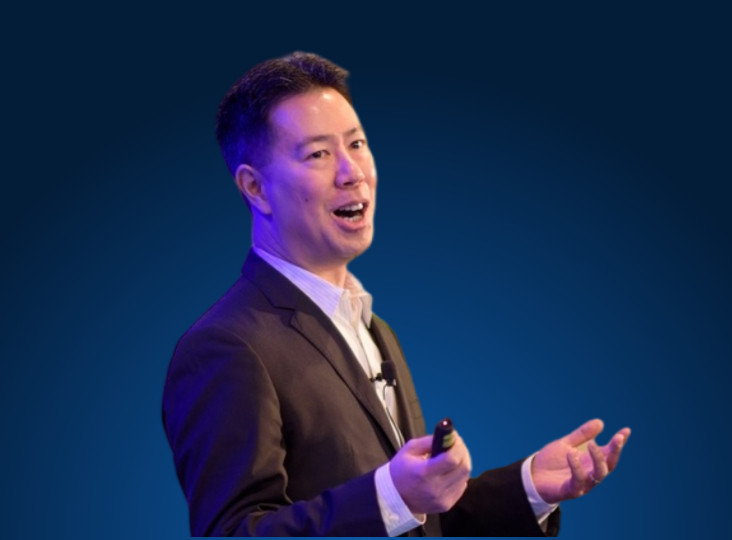How healthcare systems can expand sustainability to nurture communities
NRC Health’s Patient No Longer podcast features healthcare leaders who inspire a positive shift in the customer experience and Human Understanding. The latest episode, “Sustainability as a Strategy” features David Lubarsky, M.D., M.B.A., F.A.S.A., Vice Chancellor of Human Health Sciences and CEO for UC Davis Health.
Host Ryan Donohue, Solutions Expert and Strategic Advisor with NRC Health, talks with Lubarsky on how to achieve the highest global good and sustainability efforts to communities and patients at UC Davis Health. The integrated health system, which has approximately 17,000 employees, 1,000 students, 1,000 trainees, and 1,300 faculty members, is a large regional primary-care network, providing more than 1.5 million outpatient visits every year with an annual budget of $4.3 billion.
“We need to be thinking about an ROI as a non-profit organization, which is how we provide the greatest global good to the communities and the patients that we serve with the resources at hand,” Lubarsky says. “Too often, healthcare organizations are focused on the next pretty building. We’re undergoing a generational change at UC Davis, and we’re doubling the square footage on our campus. We took over the campus in ’77. We built about three million square feet, and we’ll be at seven million square feet in the next seven years. So we’re fundamentally changing the campus, and every single building is going to be LEED Certified, and we are really working hard to eliminate fossil-fuel use across our entire 150-acre campus.”
UC Davis is working toward electrifying the entire campus to bring them to net-zero carbon and have committed to pledges around that goal as well. Lubarsky says they are making progress across a large number of areas, not just in building, but in green construction as well. Practice Greenhealth has ranked UC Davis Health in the top 10 for sustainable food, sustainable procurement, water utilization, transportation, climate, and green building; the organization was also recently recognized for the first time as a top-25 hospital in the nation for environmental excellence.
“It’s about really bringing the science and the interest and the wellness of the populations we serve into focus,” Lubarsky says.
Here are some of the ways UC Davis is making changes for a more sustainable future:
- Lowering greenhouse gas emissions: UC Davis is among the University of California systems that have changed the way they deliver anesthesia, which is a large contributor to greenhouse gases. One anesthetic might produce 20 times the greenhouse-gas emissions of another equivalent anesthetic. “We hadn’t done anything until recently to eliminate the one that was the bigger pollutant,” Lubarsky says.
- Lowering fresh gas flows: “We’ve known this [anesthesia issue] literally for decades, but finally we’re doing something about it [by using an equivalent anesthetic with lower greenhouse-gas emissions] to lower fresh gas flows during an anesthetic, which just gets vented out into the atmosphere and carries greenhouse gases with it,” Lubarsky says. “Every single person listening to this podcast could turn around to their operating rooms, which are some of the biggest issues, and say to them, ‘Do that.’”
- Recycling single-use products: “We returned 10 tons of single-use products to original manufacturers so they could repurpose and repackage and re-sterilize them and use them again,” Lubarsky says. “And it doesn’t take that much to collect it, but it’s amazing, the mountain of waste that every hospital and operating room contributes and the amount of blue plastic single wrap that goes into an operating room for any operation.”
- Decreasing transportation costs and energy utilization: Lubarsky says UC Davis recently changed their entire water plant. “We have almost eliminated all fossil fuel and internal transportation, and actually have only electric buses going between the main campus and our health campus,” he says.
- Decreasing waste and environmental spoilage and encouraging regenerative farming: About 80% of UC Davis’s fresh produce comes from 250 miles or less. “Because we work with these farms directly, we’ve convinced them they don’t actually have to package their goods to sustain a transcontinental journey,” Lubarsky says. “So we’ve decreased waste, we’ve decreased environmental spoilage, and we’re decreasing transportation costs and energy utilization.
When you’re talking about feeding 500,000 people a day, including employees, students who eat three meals a day often, and tens of thousands of patients every single day also who also eat at our facilities—plus visitors—you can start to make a difference in the environment if all those people are seeing a reduced claim on environmental resources.”
Lubarsky says that while people choose organizations that they trust and with whom they do business, he believes it helps to make sure communities know how much UC Davis invests in health equity and creating sustainable practices.
“We didn’t always have the community’s incredible support that we enjoy now, and it’s really changed our Net Promoter Scores,” he says. “It has markedly changed our brand ranking. We were recently in a survey commission by the American Hospital Association of 220 of the largest healthcare brands, and UC Davis was number four in the United States—and we weren’t that way before.”
Not only does UC Davis support sustainability practices, but they have reached out to ensure that volunteer efforts are amplified and community-based vaccination centers and mobile-van education programs are funded, whether there is a direct ROI or not.
“The fact that we are actually impacting our community in a positive way, I believe, is creating the type of bonds that will last a generation and make people think of their trust in UC Davis Health to be a community partner and a great place to go for healthcare,” Lubarsky says.
Read about UC Davis sustainability programs here.
Learn how UC Davis Health positioned its services as a resource to complete, not compete with, other health systems to improve access and care throughout the region in this episode of Patient No Longer.


